by Sebastian Grant
Throughout the many genres of artistic practice, portraiture has continued to thrive as an important method used to capture individuals and the stories behind their painted images. Beyond mimicking the basic resemblance of physical features, the portrait also has the task of reflecting the deeper qualities of humanity and identity, especially in relation to his or her place in society. Yet, when viewing a history of art through a Western perspective, our understanding of portraiture has been constructed mainly through the eyes of Eurocentric culture, especially when mostly white artists had been given the task of displaying people of other cultures and identities in the world around them. Paul Gauguin famously painted portraits of the people of Tahiti, in order to capture the so called ‘primitive’ spirit of the foreign island, while Eugène Delacroix pictured fantastical images of the Middle East with its subjects depicted with the palest skin, despite a climate of constant sunshine. Yet, seeing portraiture from a white European point of view, how do we truly know how the identity of people of color is represented if the portraits don’t reflect the lives of the people who made them?
When especially viewing how black lives have been portrayed in this genre, Western portraiture has had a long problematic history often in terms of understanding its subject. It should be noted that Black portraiture in itself is not a product of Western Culture, and it was frequently created in Africa in the form of bronze sculpture, wood carvings, and ceramics, producing idealized models of the community and spiritual ancestors of the past. However, coinciding with the aftermath of slavery and the genesis of modern racism, most artists started to portray stereotyped and racist views of subjects in popular culture based on white impressions of black life. Yet after the important artistic creation that came from the Harlem Renaissance, and the political upheaval of the Civil Rights Movement, black voices were not only calling for equal treatment in their position of society, but also for a more authentic way of how society views the many diverse and colorful individualities that make up the African Diaspora. Fifty years later, this push for a reliable understanding of identity and agency is made even stronger with the Black Lives Matter movement calling for more representation and respect for how black identity should be depicted.
Now more than ever, black portraiture depicts these faces, personalities, and minds of different black subjects from a point of view that derives from black artists themselves. Current paintings, sculptures, photos, and many other works delve into what is authentic about black humanity, as they try to understand how we as individuals confront a past that is filled with tales of majesty and renown, but which have also been darkened with the more recent history of pain and oppression. Many artists from different parts of the African Diaspora take a look at the many factors that create black identity through the medium of portraiture, and how different artists express their relationships to those identities. In addition to looking at the outward appearances that define our community, they also looks towards understanding the inner spirit that connects us through our lived experiences, the stories of our past, and our willingness to push forward into the future.
One work that captures the power that emanates from a portrait is from the Wanderer series by Nigerian artist Oliver Enwonwu, son of the legendary Ben Enwonwu. This image of a Bedouin woman expresses dynamism in its simplicity, as she confronts the viewer with a forceful gaze. Her clothes tell her history of a nomadic people who spread riches and culture throughout the Northern African region, while her face discloses pride and wisdom of her heritage, which has shaped her into the person she has become in this portrait. The woman and her culture become one, and her spirit connects to the core presence of Africa, the ancient birthplace of humanity that still lives within us today.
These connections between the spirit of the Old World (shown in Enwonwu’s work) and the New World is examined further in Jamaican artist Derrick Grant’s Child Bride Monica, which meditates on the beauty of innocence, especially at a point when it is most threatened to be taken away. The girl pictured shows deep fear in her eyes, as she is about to be taken from her home and from a life she’s always known into the unknown. This unknown location could perhaps be the village of her new husband, or to another part of the world in the belly of a slave ship, but the truth of the end to her journey is a mystery to her. Yet, within this fear comes a determination to live and to survive. Her youth is captured in a radiant beauty, but she predicts the hardships and suffering that may come with age and experience, but beneath her fear comes a bravery that can face any trial, and combat it with strength and fortitude.
Another portrait that illustrates black feminine strength comes from Virgin Islands artist Saudia Jones, who embraces portraiture at its most quiet and still moments in her work Untitled. The piece shows a woman looking out at the bustling world, the edges of the canvas serving as her window. She has a demeanor of boredom or expectation, as if waiting on a friend, pining for a lover, or merely observing the environment that surrounds her. She is shown in her pure naked beauty without any adornments, except for an earring, which allows her to be her authentic self when viewed by the audience. With a tall afro, and brown skin untouched by powders and concealers, she actively resists against the enforced beauty standards of Eurocentric culture on black women, showing the beauty of blackness itself in the purest form.
A sense of pride and dignity is carved into rough terra cotta in Jamaican artist Basil Watson’s sculpture, Gypsy Eyes. In the piece, the figure takes on a regal aura with her head raised high, and her dreadlocked hair piled together into a tall crown. Although not representing a member of royalty, Watson gives strength to the work through its resemblance to the infamous bust of Queen Nefertiti, allowing the viewer to realize the royal magnificence that can be found in all women, and their significant power to keep the spirit of Africa alive.
While American artist Hank Willis Thomas’s piece I Am a Man may not be a portrait in the traditional sense, the piece uses language and text to capture the essence of trying to understand individual identity in defiance of an oppressive culture. Appropriating the signage used in Civil Rights marches, Thomas explores questions of black masculinity and femininity to document the history of black struggle in their efforts to be recognized as a ‘person’ in the eyes of a society that has debased them through the pejorative language used against them, and the laws that have removed many a black person’s right to self-autonomy and self-expression.
Exploring mediums outside of painted portraiture, Canadian artist Curtis Talwst Santiago often creates his Infinity Series dioramas to explore historic moments of black trauma, but in Art Zaddy and Boo Goo, he instead uses his miniaturized moment to confront the stereotyped associations of fatherhood in black life. Pushing against ‘comical’ assumptions of absent fathers, Art Zaddy captures an intimate moment between father and child, as the son is literally supported by his father in an act of play. This intimate moment envisions a future of the close relational bonds established by this first instance of connection and highlights the importance of family and heritage that is so important to African tradition.
Just as Talwst Santiago explores the importance of black fatherhood, legendary artist Joyce Scott takes on the equally important theme of motherhood in her mixed media piece War Woman I. Known for exploring themes of feminism, sexuality, racism, spirituality, and humor in her work, Dr. Scott uses a found African sculpture, usually worshiped as spiritual votive objects, and depicts her as a mother carrying her child on her back. Trudging through a morass of guns and oversized phalli, the piece shows the struggles of a mother trying to navigate her child through a world of violence and patriarchal toxicity as she tries to raise him or her to an adult life defined by respect and dignity.
History, uncertainty, identity and family, these are just only a few of the many different facets that make up this exploration of black culture in portrait art. Each of the pieces mentioned take on the historical precedent of portraiture and presents a vast and diverse group of people in a truly authentic and intimate manner. Whether capturing the energy of standing up for freedom from oppression, of relaying the tales of our forefathers and foremothers and their rich stories of the past, or from incorporating the beauty of a single individual within a moment of time, black portraiture uncovers the spirit that is coursing through each piece, illuminating the brilliance of black culture, black identity, and the black soul.
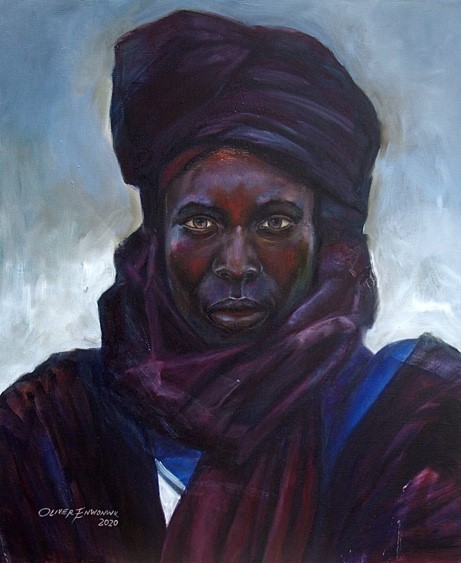
Figure 1: Oliver Enwonwu, Musa (From the Wander Series), 2020, Oil on canvas, 61 × 50.5 cm, SMO Contemporary
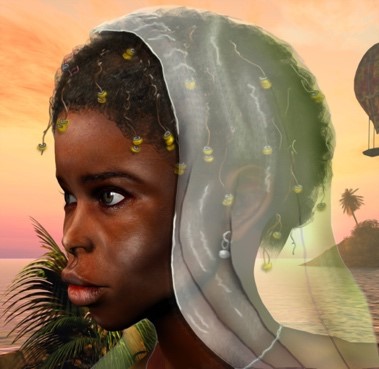
Figure 2: Derrick Grant, Child Bride Monica, 2007, Acrylic on canvas, 40.6 × 35.6 cm
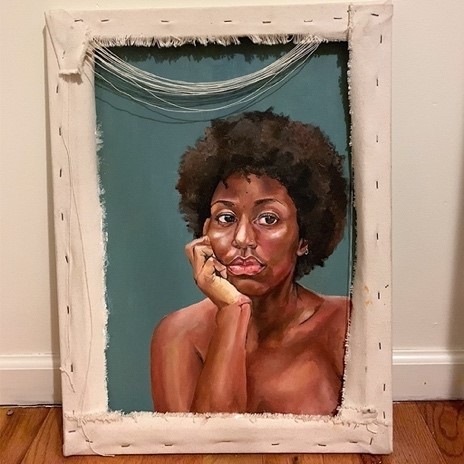
Figure 3: Saudia Jones, Untitled, 2017, Acrylic on canvas, 45.72 × 61 cm
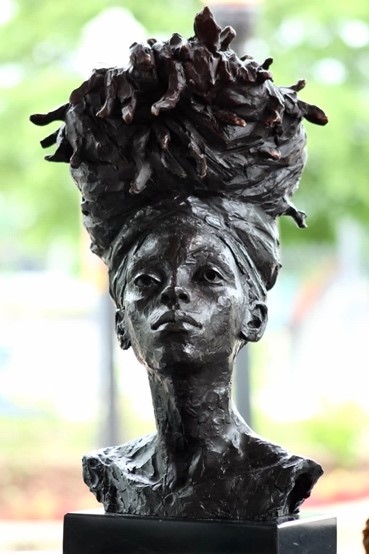
Figure 4: Basil Watson, Gypsy Eyes, 2020, Bronze, 55.9 × 27.9 x 38.1 cm, Hearne Fine Art
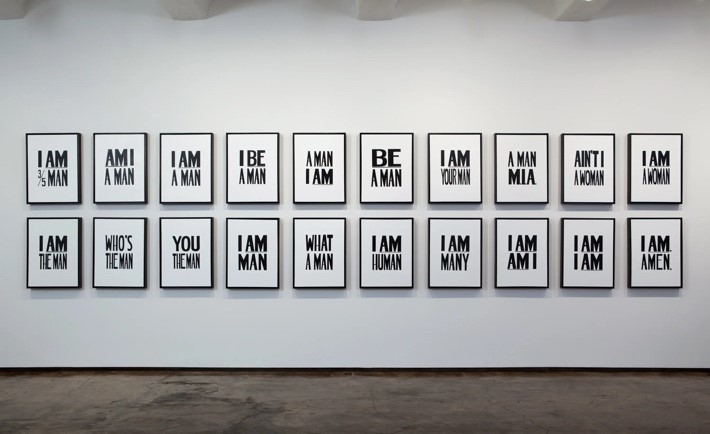
Figure 5: Hank Willis Thomas, I Am a Man, 2016, liquitex on canvas, 141 × 48.9 x 5.7 cm
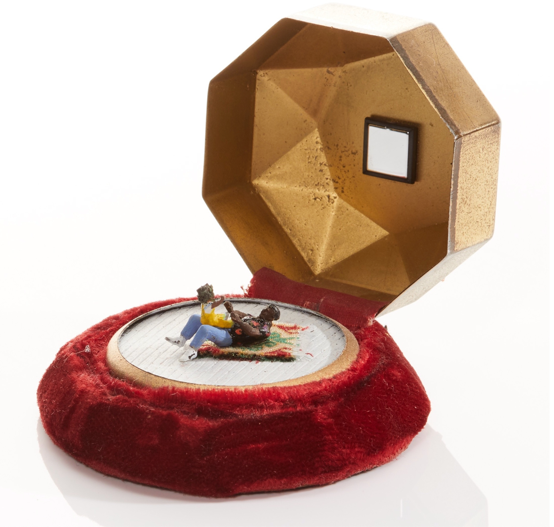
Figure 6: Curtis Tawlst Santiago, Art Zaddy and Boogoo, 2020, multimeda
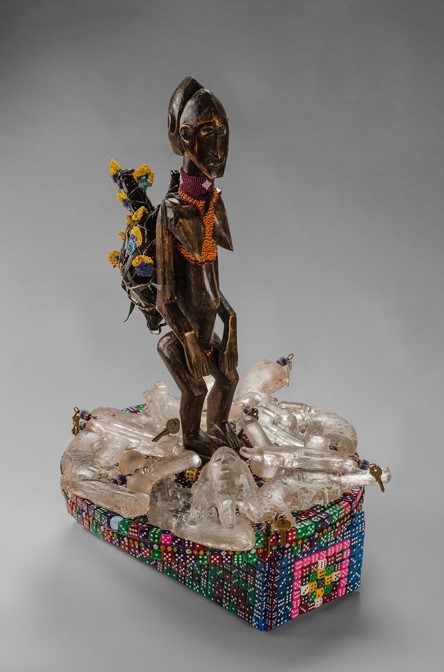
Figure 7: Joyce Scott, War Woman I, 2014, Sculpture, African sculpture, thread, wire, dice, and cast glass guns, 76.2 × 45.7 x 45.7 cm, Mobilia Gallery

Leave A Comment